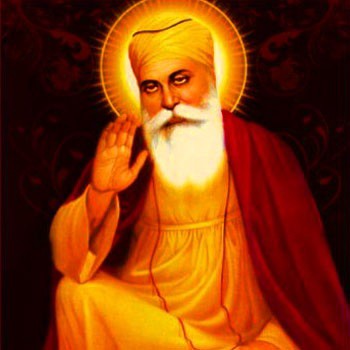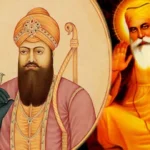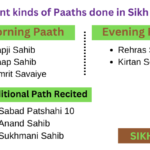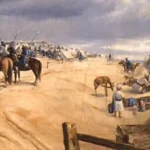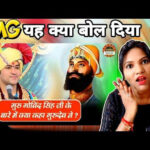Gurū Nānak (Punjabi pronoun: [gʊɾuː naːnəkᵊ], pronunciation; born Nānak on 15 April 1469 – 22 September 1539), also known as Bābā Nānak (‘father Nānak’), [1] was the founder of the first ten Sikhism Sikhism. His birthday is celebrated around the world as Guru Nanak Gurpurab by Katak Pooranmashi (‘Kattak full moon’), October-November.
It is said that Nanak traveled throughout Asia Minor teaching the message of ik onkar (ੴ, ‘one God’), who lived throughout his creation and incorporated Eternal Truth. In this sense, he would establish a unique spiritual, social, and political arena based on equality, brotherly love, beauty, and virtue.
Nakan words are recorded in the form of 974 poetic hymns, or shabda, in the Sikhism script, Guru Granth Sahib, some of the major prayers being Japji Sahib (jap, ‘to recite’; Ji and sahib appendices. Showing reverence); Asa di Var (‘the ballad of hope’); and Sidh Gosht (‘interview with Siddha’). It is part of the Sikh religion that the spirit of Nanak’s holiness, divinity, and religious authority descended upon each of the nine Gurus who passed away when the Guru was passed on to them.
Biography or Birth
Gurdwara Janam Asthan in Nankana Sahib, Pakistan, remembers the place where Nanak was believed to have been born.
Nanak was born on April 15, 1469, in the village of Rāi Bhoi Kī Talvaṇḍī (modern-day Nankana Sahib, Punjab, Pakistan) in the Lahore province of Delhi Sultanate, although traditionally, he was born locally. Indian month is Kārtik or November, known as Kattak in Punjabi.

Most Janam Sakhi (ਜਨਮਸਾਖੀ, ‘birth stories’), or folklore of the Nakan tradition, state that he was born on the third day of the two bright months of the month, in the month of Baisakh (April) of Samvat 1526. These include Puratan (‘traditional’ or ‘ancient’) Janam Sakhi, Miharban Janam Sakhi, Gyan-ratanavali of Bhai Mani Singh, and Vilayat Vali Janam Sakhi. [9] Sikh records state that Nanak died on the 10th day of Asauj’s month of Samvat 1596 (22 September 1539 CE), aged 70, 5 months, and 7 days. This further suggests that he was born in the month of Vaisakh (April), not in Kattak (November).
Kattak’s birthday
Late in 1815, during the reign of Ranjit Singh, Nanakana’s birthday party was held in April at his birthplace, then known as Nankana Sahib. [9] However, the anniversary of Nanak’s birth — Gurpurab (gur + Purab, ‘festival’) – was followed by a celebration of the full moon of Kattak in November. The earliest record of such a celebration in Nankana Sahib dates from 1868 CE.
There may be several reasons for the recognition of Kattak’s birthday by the Sikh community. For one thing, it may have been the day of Nanak’s enlightenment or the “spiritual birth” of 1496, as suggested by Dabestan-e Mazaheb.
The only Janam Sakhi to support the Kattak birthday tradition of Bhai Bala. Bhai Bala is said to have obtained the Nakan horoscope from Nanak’s uncle Lalu, who states that Nanak was born on the same date as October 20, 1469 CE. However, the Janam Sakhi was written by Handalis — a Sikh sect following the Sikh translator known as Handal — trying to portray the founder as superior to Nanak. According to the superstition prevailing in northern India at that time, a baby born in the month of Kattak is believed to be weak and unfortunate, which is why it is said that Nakan was born in that month.
Bhai Gurdas, writing on the full moon of the Kattak moon a few decades after Nanak’s death, points out that Nanak “acquired all knowledge” on the same day, and now it was the author’s opportunity to “discover divine light.”
According to Max Arthur Macauliffe (1909), a Hindu festival held in the 19th century at Kartik Purnima in Amritsar attracted a large number of Sikhs. Sikh community leader Giani Sant Singh did not like this, so he started a ceremony at the Sikh shrine of the Golden Temple that day, which he introduced as a celebration of Guru Nanak’s birthday. [14]
Macauliffe also notes that Vaisakh (March – April) has already seen several important festivals — such as Holi, Rama Navami, and Vaisakhi — so people will be busy with agricultural activities after the Baisakhi harvest. Holding ceremonies to celebrate Nanak’s birthday soon after Vaisakhi would result in fewer, therefore, smaller offerings for Sikh places of worship. On the other hand, on the day of the full moon in Kattak, the great Hindu festival of Diwali was over, and the peasants — who had a large income from the sale of crops — were able to give generously. [15]
Family and adolescent life
Nanak’s parents, including father Kalyan Chand Das Bedi (often referred to as Mehta Kalu) and mother Mata Tripta, were both Hindu Khatris and employed as merchants. His father, in particular, was the patrol (accountant) of a plantation income in the Talwandi district.
According to Sikh tradition, Nanak’s birth and early years of life were marked by numerous events indicating that Nakan was blessed with divine grace. Comments on his life give details of his blossoming awareness from an early age. For example, when she was five years old, Nanak reportedly expressed her interest in God.
Influences
Many Sikhs believe that Guru Nanak’s message was divinely revealed, as his words to Gugu Granth Sahib state that his teachings are from the Creator himself. The tragic event of his life in Sultanpur, where he returned three days after his enlightenment, also supports this belief.
Many modern historians empower his teachings to link the pre-existing bhakti, sant, with the Hindu / Islamic cultural wali. Scholars point out that in their source, Guru Nanak and Sikhism were influenced by the nirguni (‘impersonal God’) culture of medieval India. [Vi] However, some historians do not consider the evidence of Sikhism to be merely an extension of the Sikh religion. Bacterial Movement. Sikhism, for example, contradicted certain views of the saints of Bakti Kabir and Ravidas.
The roots of the Sikh culture are probably in Indian culture and their idea grew into a Bhakti culture.
